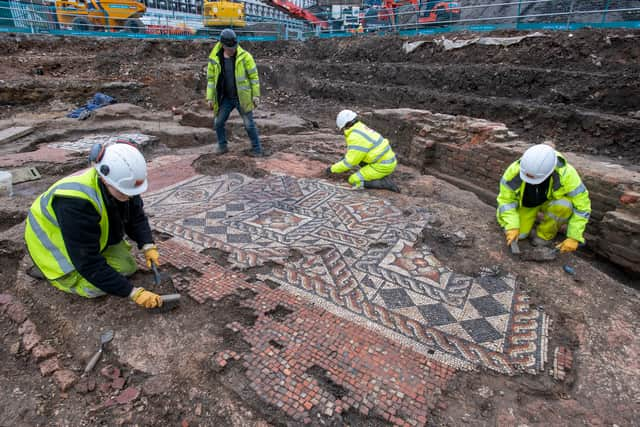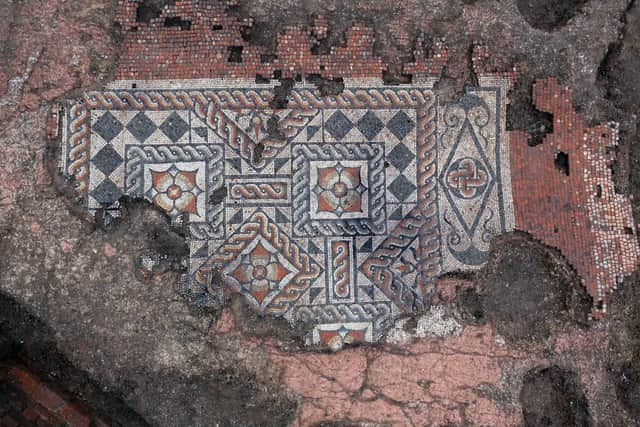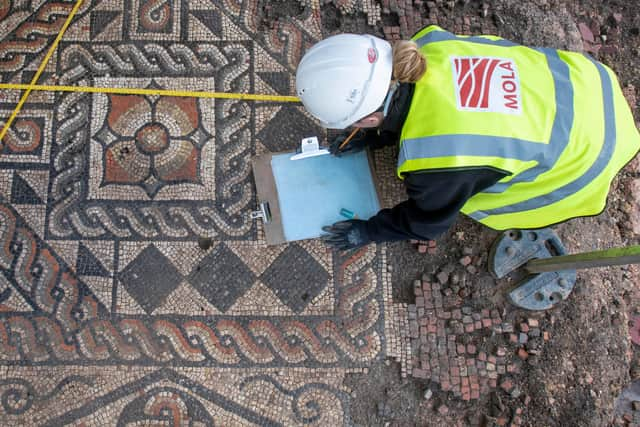Lavish Roman mosaic discovered next to the Shard is largest found in London for more than 50 years
and live on Freeview channel 276
Archaeologists have uncovered the largest area of Roman mosaic found in London for more than half a century.
The mosaic includes two highly-decorated panels featuring large, colourful flowers, geometric patterns and elaborate motifs that are believed to have once decorated the floor of a Roman dining room.


Advertisement
Hide AdAdvertisement
Hide AdArchaeologists from MOLA (Museum of London Archaeology) made the discovery during excavations as part of the construction of a regeneration project near the Shard in Southwark.
MOLA site supervisor, Antonietta Lerz, said: "This is a once-in-a-lifetime find in London. It has been a privilege to work on such a large site where Roman archaeology is largely undisturbed by later activity - when the first flashes of colour started to emerge through the soil everyone on site was very excited."
It is made up of two panels, with the largest showing large, colourful flowers surrounded by bands of intertwining strands - a motif known as a guilloche.
There are also lotus flowers and several different geometric elements, including a pattern known as Solomon’s knot, which is made of two interlaced loops.


Advertisement
Hide AdAdvertisement
Hide AdDr David Neal, former archaeologist with English Heritage and leading expert in Roman mosaic, has attributed this design to the "Acanthus group" - a team of mosaicists working in London who developed their own unique local style.
The archaeologists from Mola, who have worked at the site since last June, believe the room housing the mosaic was a triclinium, containing dining couches on which people would recline to eat and drink while admiring the decorative flooring.
The walls were also richly decorated.


The excavations are part of the Liberty of Southwark regeneration project, which will consist of homes, workspace, shops and restaurants.
The mosaics will be carefully recorded and assessed by an expert team of conservators before being transported off-site, to enable more detailed conservation work to take place.
Future plans for the public display of the mosaics are currently being determined.
Comment Guidelines
National World encourages reader discussion on our stories. User feedback, insights and back-and-forth exchanges add a rich layer of context to reporting. Please review our Community Guidelines before commenting.
